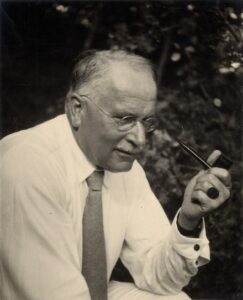Do you have a favorite brand? A shoe, or perhaps a car?
Have you ever considered why this brand might be your favorite?
Certain brands win our loyalty and affection. How do they do that?
What is that special mix of image and messaging and perception that produces a brand that people love? Psychology can teach us a lot about it.
The way we feel about brands stems from our emotions, but more importantly, our personalities and specific life experience. At ChrisRubinCreativ, human and social psychology underpins everything we do. One of the oldest and more fundamental personality frameworks—which can help us understand how individuals relate to brands—was created by Carl Jung, renowned Swiss psychiatrist, and founder of analytical psychology.

Jungian archetypes are universal, mythic characters or personas that embody specific traits, behaviors, and values. They are deeply rooted in the human psyche and can be used to create powerful emotional connections with consumers. The “Hero” archetype, for example, represents courage, strength, and the ability to overcome obstacles, while the “Sage” archetype represents wisdom, knowledge, and guidance.
Incorporating these archetypes into branding and messaging can enable companies to tap into the deep psychological needs and desires of their target audience. Numerous studies and scholarly articles support the effectiveness of utilizing archetypes in branding.
For example, Jennifer Aaker1, a marketing professor at Stanford University, found that brands with strong personality traits are more likely to be perceived as authentic and trustworthy by consumers. Similarly, David A. Aaker and Erich Joachimsthaler2 found that brands that successfully utilize archetypes have a significant competitive advantage over those that do not.

Building on Jung’s organized analytical system, it can be helpful to view brands through the lens of the 12 different personality archetypes, and how those can apply to generating authentic emotional resonance with a particular audience.
In a series of articles in coming months, we will look at each of these 12 archetypes, and potentially help you see and understand your own brand in a new light.
Done well, a brand is a cohesive experience that customers witness and feel whenever they interact with its products or services.
So what does this mean for your brand?
As much as we would like to believe that all of our choices and decisions are fully conscious, intentional, most often we are driven by our subconscious. In his book about the subconscious mind of the consumer, Professor Gerald Zaltman pointed out that 95% of all cognition happens in the unconscious mind. We can use the work of Jung and Zaltman, among others, to categorize brands in a way that helps ensure the relatability and unconscious appeal is aligned with the organization, its offerings, and the audience who would most benefit.
These are just a few teasers to get you thinking…
The Magician
The Walt Disney brand exists and endeavors to wow their audience with new and exciting experiences, while also fulfilling their dreams. It enjoys taking fans on a mysterious journey, and providing them with memorable, magical moments.
The Lover
Chanel is about passionate feelings of intimacy and sensual pleasure—think fine leathers and exotic scents—that drive affinity and loyalty for Chanel.
Brands can also use archetypes to differentiate themselves from competitors. By selecting an archetype that is unique in their industry, a brand can stand out and create a distinct identity in the minds of consumers. For example, a financial services company that aligns with the “Magician” archetype may differentiate itself from competitors by emphasizing its ability to bring financial success and prosperity to its clients. Over all, incorporating archetypes into branding can be a powerful tool for building stronger connections with consumers and achieving long-term success.
In a global culture where we each have billions of options to choose from—with so many brands wanting our attention—it is essential to know and clearly understand your brand’s personality. This is just one necessary component of thoughtful, authentic brand identity and positioning. If your brand strategy is not shaped by this kind of thinking, it’s time to take a fresh look.
This is about purpose, intention, and resonance. We know of no better way to grow your audience, and your business, and we love this stuff.
Stay tuned for more on this, coming soon…
References:
1 Aaker, J. L. (1997). Dimensions of brand personality. Journal of Marketing Research, 34(3), 347-356.
2 Aaker, D. A., & Joachimsthaler, E. (2000). The brand relationship spectrum: The key to the brand architecture challenge. California Management Review, 42(4), 8-2

